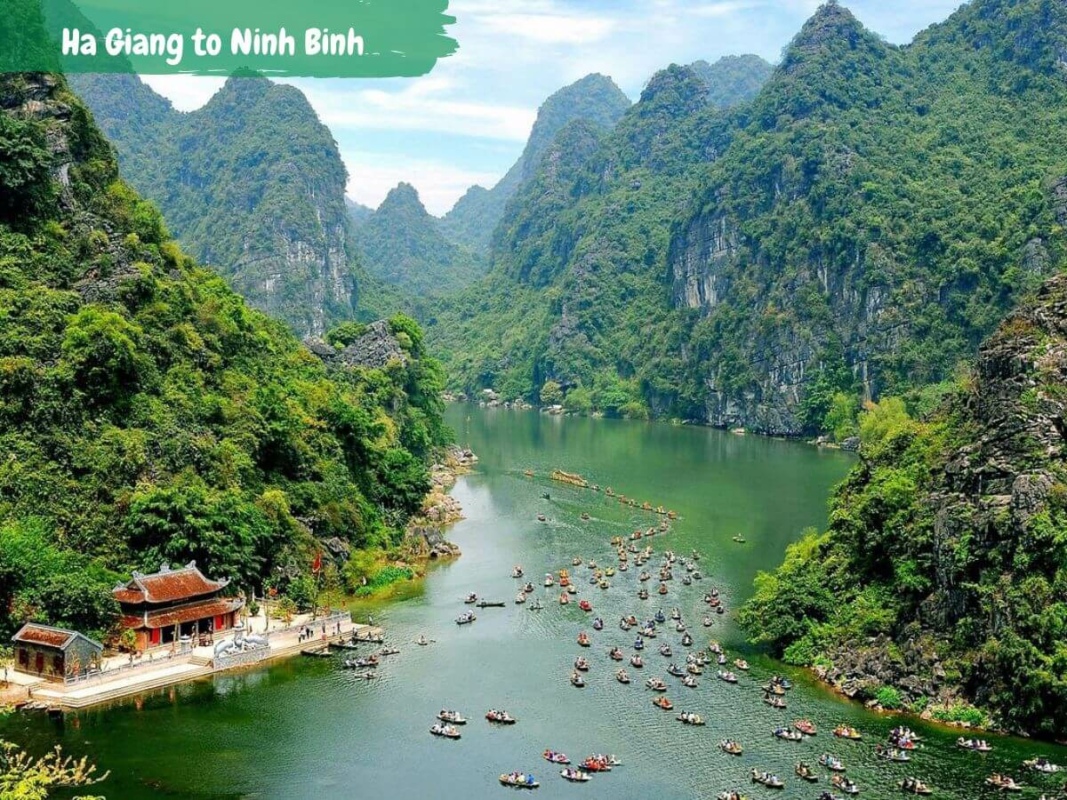Ha Giang Loop, Travel Guide
From Ha Giang to Ninh Binh: Exploring Northern Vietnam
Northern Vietnam is a region known for its stunning natural landscapes, rich cultural heritage, and bustling cities. This region is home to some of the most breathtaking scenery in the country, including the majestic mountains of Ha Giang, the terraced rice fields of Sapa, and the iconic limestone karsts of Halong Bay. In addition to its natural beauty, Northern Vietnam, Ha Giang to Ninh Binh is also a place where travelers can immerse themselves in the local culture, explore ancient historical sites, and indulge in delicious Vietnamese cuisine.
Key Takeaways
- Northern Vietnam offers a diverse range of experiences, from majestic landscapes to ancient capitals and charming old quarters.
- Ha Giang is known for its breathtaking landscapes, including towering mountains, deep valleys, and terraced rice fields.
- Sapa provides an opportunity to immerse in local culture, with visits to ethnic minority villages and vibrant markets.
- Cruising through Halong Bay offers stunning views of limestone karsts and emerald waters, with opportunities for kayaking and cave exploration.
- Ninh Binh, the ancient capital, is home to historic temples, pagodas, and the stunning Trang An landscape complex.
The Majestic Landscapes of Ha Giang
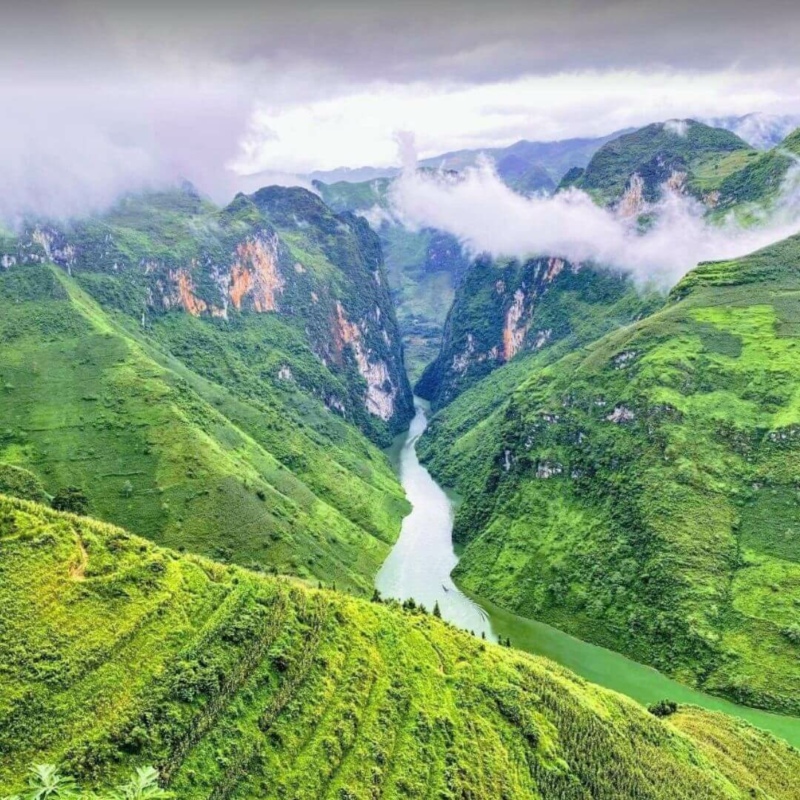
Ha Giang is a remote and rugged province located in the far north of Vietnam, bordering China. This region is known for its dramatic landscapes, with towering mountains, deep valleys, and winding rivers. The most famous attraction in Ha Giang is the Dong Van Karst Plateau Geopark, a UNESCO World Heritage site that is home to some of the most stunning scenery in the country. Travelers can embark on a thrilling motorbike adventure along the Ma Pi Leng Pass, which offers breathtaking views of the surrounding mountains and valleys.
In addition to its natural beauty, Ha Giang is also home to a number of ethnic minority communities, including the H’mong, Tay, and Dao people. Visitors can immerse themselves in the local culture by staying in traditional homestays, participating in village activities, and learning about the unique customs and traditions of the region.
Dong Van Karst Plateau UNESCO Global Geopark
This expansive geopark covers over 2,300 square kilometers and features an otherworldly landscape of towering limestone mountains, deep valleys, and unique rock formations. The terrain was shaped by tectonic plate movements over millions of years. Visitors can explore remote H’mong, Dao, and Tay minority villages nestled among the dramatic peaks and ravines. Popular activities include trekking, motorcycle touring, and cultural immersion experiences.
Meo Vac District and the “Happiness Road”
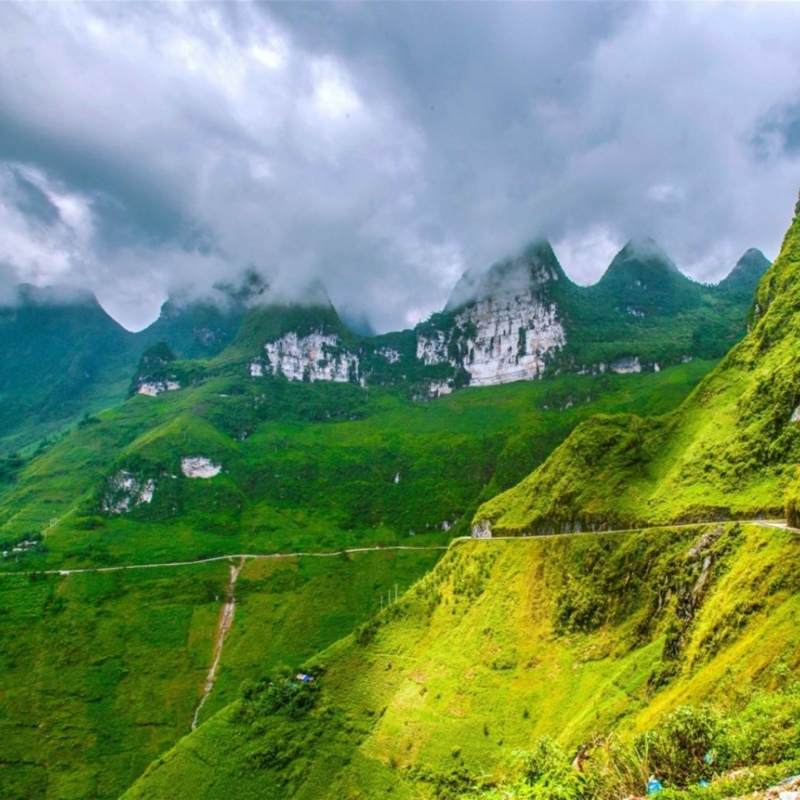
The winding, mountainous roads of Meo Vac District offer some of the most picturesque driving in Vietnam. The famous “Happiness Road” (Ma Pi Leng Pass) twists and turns for over 20 kilometers, providing sweeping vistas of terraced rice fields, towering rock walls, and remote ethnic minority communities. This is considered one of the most beautiful and thrilling drives in the country. Visitors can also explore colorful local markets, ancient stone fortresses, and serene riverside settings.
Quan Ba District and the “Heaven’s Gate”
Quan Ba District is home to the iconic “Heaven’s Gate”, a high mountain pass that offers panoramic 360-degree views of the surrounding valleys and peaks. On a clear day, visitors can see for miles across the rugged, forested terrain. The drive up to the viewpoint is an adventure in itself, with hairpin turns and dramatic drop-offs. This is a popular spot for photography enthusiasts and sightseers.
Hoang Su Phi District and the Terraced Rice Fields
The terraced rice fields of Hoang Su Phi are considered among the most picturesque in all of Vietnam. The striking patchwork of green, yellow, and gold hues transforms dramatically with the changing seasons. The best time to visit is during the harvest seasons in late summer and fall when the fields are at their most vibrant. Visitors can explore the fields on foot, by motorcycle, or by joining a local farming experience.
Immersing in Local Culture in Sapa
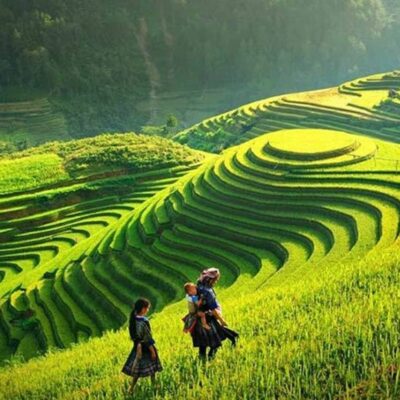
Sapa is a charming town nestled in the Hoang Lien Son mountain range, known for its stunning terraced rice fields and vibrant ethnic minority communities. The town is a popular base for trekking adventures, with trails leading through lush forests, past cascading waterfalls, and to remote hill tribe villages. One of the highlights of visiting Sapa is the opportunity to interact with the local ethnic minority groups, including the H’mong, Red Dao, and Tay people. Travelers can visit traditional markets, where they can shop for handmade crafts and textiles, sample local delicacies, and witness traditional dance performances.
One of the best ways to truly experience Sapa’s culture is by trekking through the surrounding hills and valleys and staying overnight in a traditional homestay. Visitors can hike between remote villages inhabited by groups like the H’mong, Dao, Tay, and Giay people. Homestay hosts provide an intimate glimpse into their daily lives, customs, and cuisine.
Sapa is famous for its vibrant handicraft traditions. Visitors can browse bustling local markets and interact with artisans weaving intricate textiles, embroidering colorful clothing, and crafting silver jewelry and carved wooden items. Many workshops and cooperatives offer opportunities to learn traditional techniques.
Sapa’s diverse ethnic groups celebrate a variety of traditional festivals throughout the year. Visitors may have the chance to attend lively events like the Bac Ha Market Festival, the Sin Suoi Ho Buffalo Fighting Festival, or the Gau Tao New Year celebration. These festivals showcase music, dance, rituals, and other cultural practices.
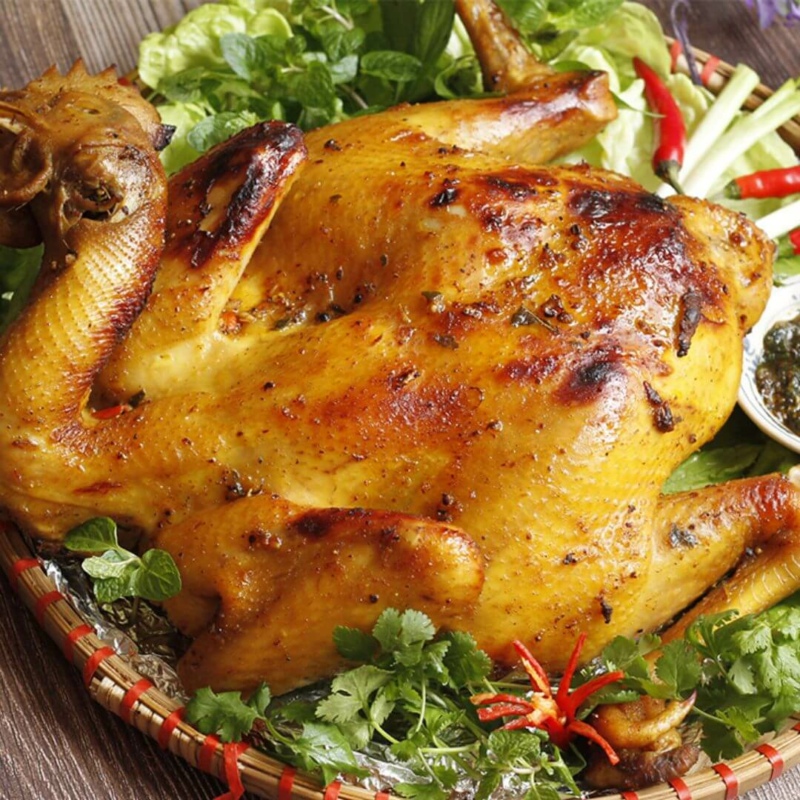
The cuisines of Sapa’s ethnic minorities offer a delicious window into their cultures. Visitors can learn to prepare local specialties like grilled chicken with lime leaves, smoked pork, and traditional rice dishes during hands-on cooking classes. Sampling regional ingredients and techniques provides an authentic taste of Sapa.
The cuisines of Sapa’s ethnic minorities offer a delicious window into their cultures. Visitors can learn to prepare local specialties like grilled chicken with lime leaves, smoked pork, and traditional rice dishes during hands-on cooking classes. Sampling regional ingredients and techniques provides an authentic taste of Sapa.
Cruising the Stunning Halong Bay
Halong Bay, located in Vietnam’s Quang Ninh province, is renowned for its stunning natural beauty and is one of the country’s top tourist destinations. Cruising through the bay’s iconic limestone karsts and islands is a must-do experience for visitors to Vietnam.
Gliding peacefully across the bay’s calm, emerald-green waters is a tranquil and mesmerizing experience. Visitors can sit back and take in the passing scenery, or explore the bay’s hidden coves, lagoons, and beaches by kayak or bamboo boat. The slower pace allows for deeper appreciation of Halong Bay’s natural wonders.
| Metrics | Data |
|---|---|
| Number of Islands | 1,600 |
| Area | 1,553 km² |
| UNESCO World Heritage Site | Yes |
| Popular Activities | Cruising, Kayaking, Swimming |
| Best Time to Visit | October to April |
Halong Bay is one of the most iconic and picturesque destinations in Vietnam, known for its emerald waters and thousands of towering limestone karsts. A cruise through Halong Bay offers travelers the chance to marvel at the breathtaking scenery, explore hidden caves and grottoes, and relax on pristine beaches. Visitors can also partake in activities such as kayaking, swimming, and squid fishing while on board. In addition to its natural beauty, Halong Bay is also home to floating fishing villages, where locals live and work on the water.
Travelers can take a closer look at these unique communities by visiting them on a traditional bamboo boat or kayak. Whether it’s a day trip or an overnight cruise, exploring Halong Bay is an unforgettable experience that showcases the natural splendor of Northern Vietnam.
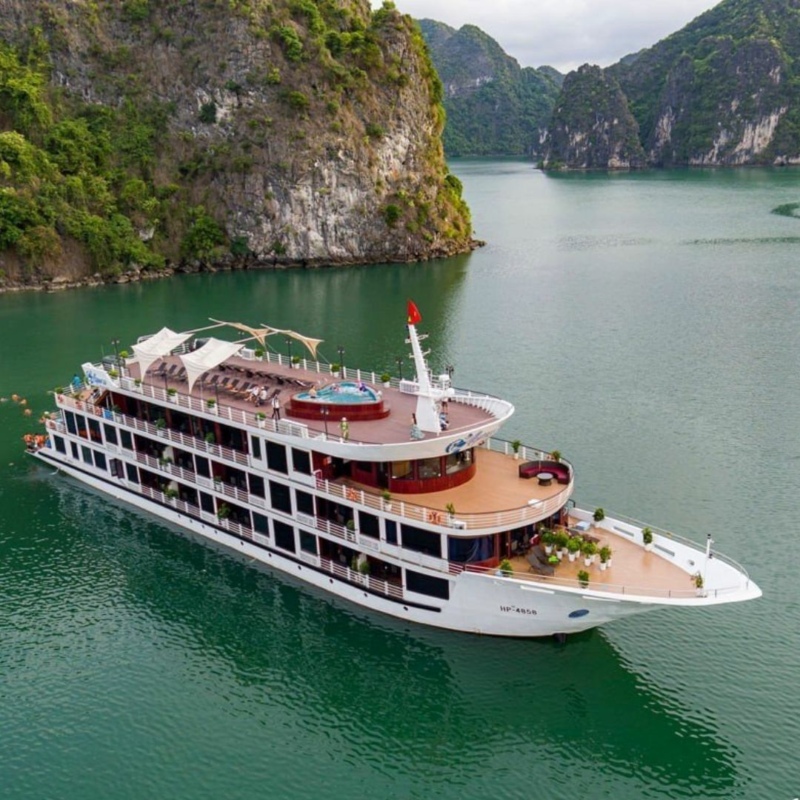
Discovering the Ancient Capital of Ninh Binh
Ha Giang to Ninh Binh, Ninh Binh is a province located south of Hanoi, known for its stunning karst landscapes and rich history. The area is often referred to as “Halong Bay on land” due to its similar limestone formations and picturesque scenery. One of the most popular attractions in Ninh Binh is Tam Coc, a series of limestone caves and grottoes that can be explored by boat along the Ngo Dong River. Travelers can also visit Trang An, another UNESCO World Heritage site that features a network of caves, temples, and lush valleys.
| Destinations | Details |
|---|---|
| Hoa Lu Ancient Capital | The ruined citadel of Hoa Lu was the capital of Vietnam under the Dinh and Early Le dynasties. Visitors can wander the remains of ancient palaces, temples, and pagodas, imagining the grandeur of this former seat of power. Key sites include the Temple of the Dinh and Le Kings, the Dinh Tien Hoang Palace, and the stone carvings depicting historical events. |
| Trang An Scenic Landscape Complex | This UNESCO World Heritage site features a stunning karst landscape of limestone mountains, rivers, and caves. Visitors can take boat tours through the serene waterways, passing by lush rice fields and peaceful rural villages. Highlights include the Trang An Grottoes, Bich Dong Pagoda, and the Hoa Lu Ancient Capital. |
| Tam Coc “Halong Bay on Land” | Often referred to as “Halong Bay on Land”, Tam Coc offers a similar landscape of towering karst formations, but surrounded by emerald rice fields rather than the ocean. Visitors can take a traditional sampan boat trip along the Ngo Dong River, weaving through the dramatic rock formations. |
| Bai Dinh Pagoda Complex | This expansive Buddhist temple complex is one of the largest in Vietnam. The main highlights are the towering 14-story Bai Dinh Pagoda and the 500 Arhat Statues, one of the largest collections of Buddha statues in Southeast Asia. |
| Culture and Cuisine | Beyond the natural landscapes, Ninh Binh also offers immersive cultural experiences. Visitors can explore traditional villages, sample regional specialties like goat meat and steamed sticky rice, and witness craft demonstrations such as pottery making and embroidery. |
Exploring the Charming Old Quarter of Hanoi
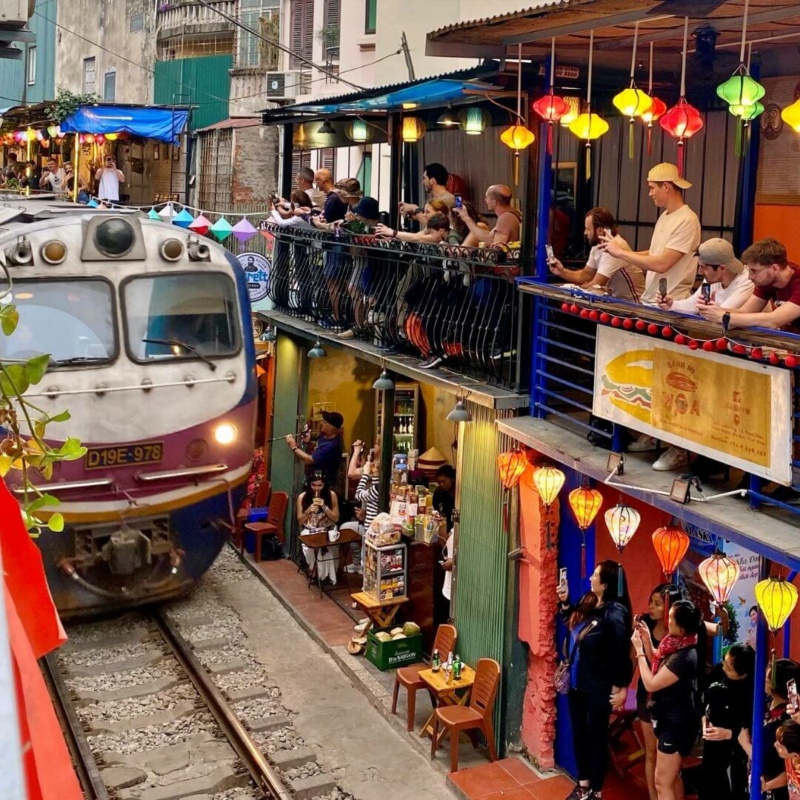
Hanoi, the capital city of Vietnam, is a vibrant metropolis that seamlessly blends modernity with tradition. The Old Quarter is a bustling maze of narrow streets and alleyways lined with colonial buildings, ancient temples, and traditional shops. The Old Quarter is divided into 36 ancient streets, each named after the primary trade or craft historically associated with that area. Examples include Hang Bac (Silver Street), Hang Gai (Silk Street), and Hang Buom (Sail Street). Wandering these streets provides insight into the district’s legacy as a commercial center.
Visitors can wander through the chaotic streets, sampling street food from local vendors, bargaining at bustling markets, and admiring the historic architecture. One of the most iconic landmarks in Hanoi is Hoan Kiem Lake, a peaceful oasis in the heart of the city that is surrounded by lush gardens and historic pagodas. Travelers can also visit cultural sites such as the Temple of Literature, Vietnam’s first university, and the Ho Chi Minh Mausoleum, where visitors can pay their respects to the country’s revered leader. Hanoi is also a city of contrasts, with modern skyscrapers standing alongside ancient pagodas and French colonial buildings.
The Old Quarter is home to a number of lively, crowded markets that offer a sensory feast. Highlights include Dong Xuan Market, the largest indoor market in Hanoi, and Hang Da Market, famous for its wide selection of fresh produce and household goods.
Scattered throughout the Old Quarter are important historic landmarks like the ancient Temple of Literature, One Pillar Pagoda, and St. Joseph’s Cathedral. These sites offer glimpses into Vietnam’s rich cultural and religious heritage.
Tips for Traveling Ha Giang to Ninh Binh
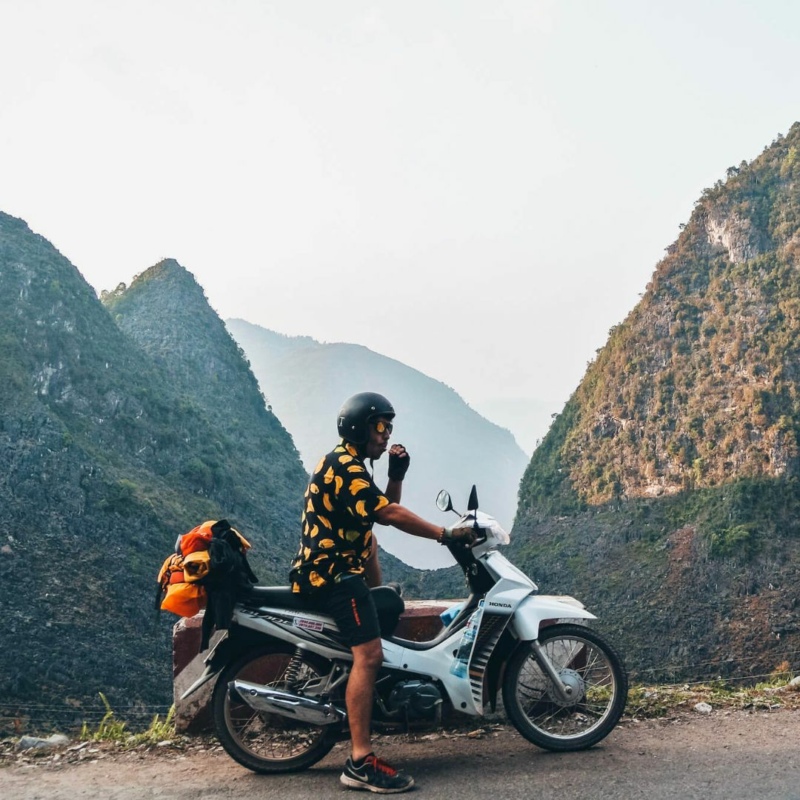
When traveling in Northern Vietnam, it’s important to be mindful of cultural customs and traditions. Visitors should dress modestly when visiting religious sites or rural villages and always ask for permission before taking photos of local people. It’s also important to be respectful of local customs and traditions, such as removing shoes before entering someone’s home or temple.
Another tip for traveling in Northern Vietnam is to be prepared for varying weather conditions. The region experiences distinct seasons, with hot and humid summers and cool winters. It’s important to pack appropriate clothing for the time of year you plan to visit and be prepared for sudden changes in weather.
When exploring Northern Vietnam’s natural landscapes, it’s important to practice responsible tourism. This includes staying on designated trails when trekking, disposing of waste properly, and supporting local eco-friendly initiatives.
Finally, it’s important to be mindful of your impact on local communities when traveling in Northern Vietnam. Supporting local businesses, artisans, and tour operators helps contribute to sustainable tourism practices and ensures that your travel experience has a positive impact on the region.
>> Read More:
In conclusion, Northern Vietnam, from Ha Giang to Ninh Binh offers a diverse range of experiences for travelers to enjoy, from stunning natural landscapes to rich cultural heritage. Whether it’s embarking on a thrilling motorbike adventure in Ha Giang, immersing in local culture in Sapa, cruising through the stunning Halong Bay, discovering ancient historical sites in Ninh Binh, exploring the charming Old Quarter of Hanoi or simply taking in the breathtaking scenery throughout the region – Northern Vietnam has something for every type of traveler.
By being mindful of cultural customs and traditions, being prepared for varying weather conditions, practicing responsible tourism, and supporting local communities – travelers can ensure that their experience in Northern Vietnam is not only memorable but also sustainable and respectful.

